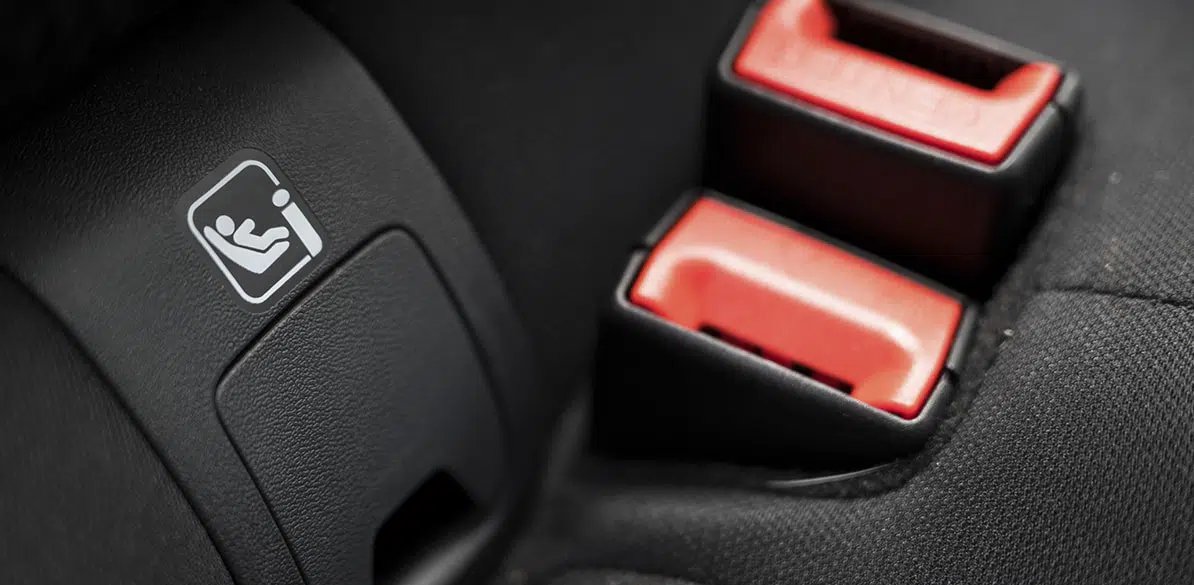Do you know what the Compatibility List is?
The importance of your car’s compatibility with the ISOFIX system

Road Safety
The arrival of a new family member is always a cause for joy, but also for concern, especially when it is your first baby. In general, there are many unknowns related to their health, development and safety. And although people tend to agree on the first two, no matter who you ask, in the case of safety and, more specifically, car safety, the recommendations and guidelines can vary considerably depending on the source consulted.
We want to help you choose, purchase and learn how to use the car seat for your baby. To do this, we tell you what a compatibility checklist is and what to expect from it.
What is a compatibility list?
It is a booklet that is annexed to the child car seat’s instruction manual, and it lists car makes and models in alphabetical order, indicating whether one or more seats of each model referenced are compatible (or not) with the car seat in question.
Do all child car seats come with a compatibility list?
No, this list comes with devices that are installed in the car with the ISOFIX system, as when a child car seat is fitted using a seat belt, from an approval point of view, it is considered to be compatible with any car with three or more wheels in which the seats are fitted with a three-point belt.
Are there any ISOFIX seats that do not come with the compatibility list?
Yes. Models that are approved under the R-44 standard and categorized as “ISOFIX UNIVERSAL” are exempt from having to provide this list because the standard considers that they are suitable for any vehicle fitted with ISOFIX anchor points.
In the case of the UN-129 standard, child car seats categorized as “I-SIZE” are temporarily accompanied by the compatibility list, something that will no longer happen in the future, when the entire car fleet is renewed and the majority include seats categorized as “I-SIZE”; from that moment on, the list will only be attached to child car seats with ISOFIX fittings categorised by the UN-129 as for a “SPECIFIC VEHICLE”.
What happens is a model of car is not listed?
The list reflects compatibility and incompatibility, so if a car model does not appear at all, we cannot assume that it is not compatible, but only that it has not been tested. That is why it is best to go to a specialized retailer to test the car seat before buying it and make sure that it can be correctly anchored.
Does this list guarantee that our baby will be comfortable and safe in the chosen seat?
This is the million dollar question. To avoid problems, we recommend that you buy the car seat with the help of a professional. You should always buy a car seat with the help of a professional and at a specialist point of sale where you can go to try it out, get information and advice whenever you need it, not only on this question, but also on many other aspects, including approval, type of anchor points, expiry of the devices, the most suitable places in the car, personalized solutions, and so on.
The main cause of concern for families is when, once purchased, they find that the seat does not adapt well to their circumstances or those of the baby. This is because the compatibility list refers exclusively to the volume occupied by the system and the different anchors between the seat and the vehicle, but says nothing about space, comfort or reclining requirements.
As a result, quite often, and especially in systems that are purchased on the internet, the buyer finds that when putting the baby in the seat for the first time, it is placed very awkwardly and in a position that is not at all beneficial in this initial stage of its development.
The chairs must guarantee an ideal body position throughout the time of use and the only way to be sure beforehand that this will be achieved is to go to a specialized professional.
Issues such as the distance necessary to maintain a comfortable position for the occupants in the front seats, or the layout of the rear seating when the new seat has to coexist with other passengers, whether adults or children, are questions that we can easily overlook due to a lack of knowledge. Each family, circumstances and requirements are different. That is one of the reasons why no list can cover the particular needs of each family nucleus. The other reason is that, from the point of view of the approval regulations, the list is only intended to ensure that the child seat can be correctly anchored to the vehicle and that it does not take up more space than stipulated.
While a compatibility list guarantees the compatibility between the car seat and our car, a professional will be able to guarantee the compatibility between our child and the car seat. Both are necessary and neither is mutually exclusive.
